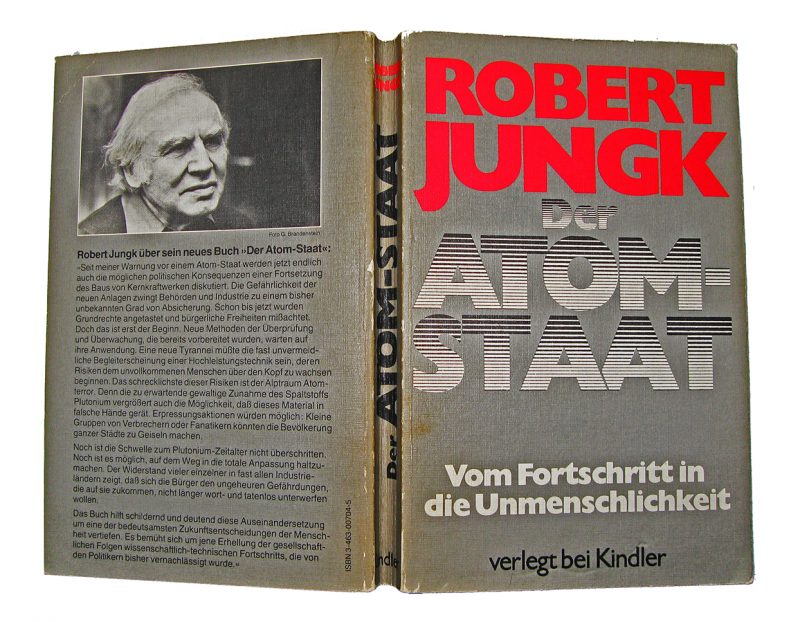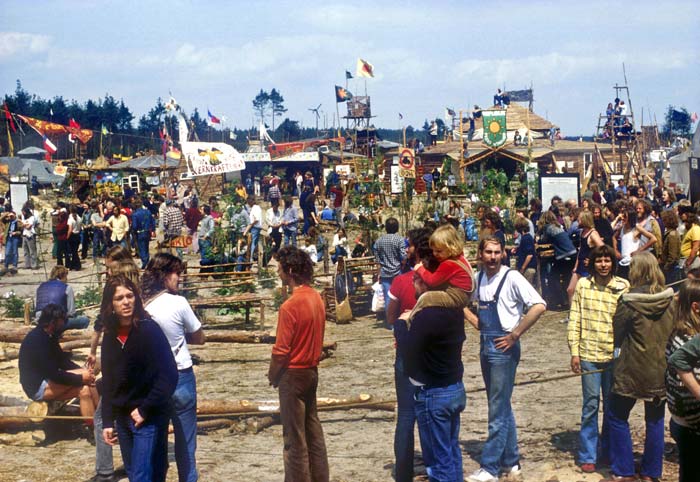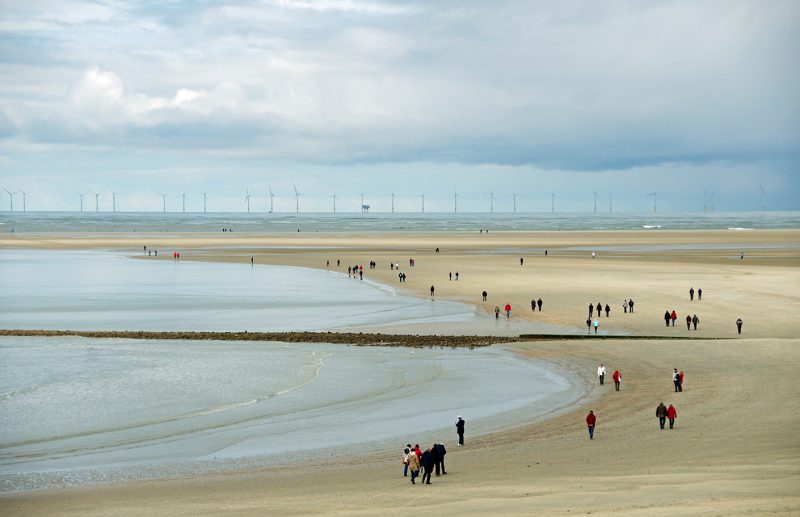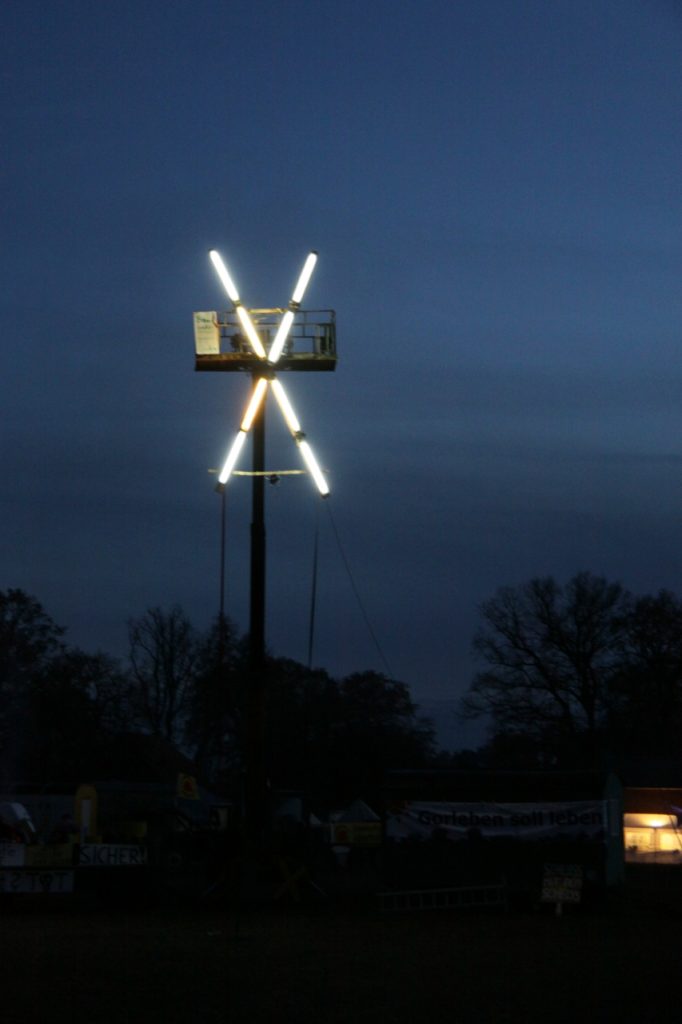When the German federal parliament voted virtually unanimously in favor of an accelerated nuclear phase-out in June 2011, the country had finally reached its nuclear consensus. In the 1990s the then-reigning coalition between Social Democrats and the anti-nuclear Green Party had taken the first steps to ending the nuclear age in German energy policy. But now, only three months after the accidents in Fukushima, even the center-right government of Chancellor Angela Merkel, previously in favor of nuclear energy, could no longer resist the broad anti-nuclear sentiments in Germany. The decision to shut down all nuclear power plants until 2022 and to replace them with renewable sources of energy was widely seen as a precautionary measure to protect the population from a dangerous and utterly uncontrollable technology as well as an ecologically prudent step toward a (re)new(able) energy future. The broad consensus obliterated the conflicts once generated by atomic power in the (West) German public from the 1970s to the 1990s. Back then, the radical anti-nuclear movement did not regard their government as a precautionary state that protects them from catastrophic risks, but instead criticized it as a nuclear state and thus as an enabler of dangerous technologies and a genuine risk in itself.
The anti-nuclear movement and the recent history of German energy policy provide a particularly revealing lens on the dynamics of public infrastructures and infrastructure publics. Anti-nuclear activists in the 1970s and 1980s devised an effective political critique of technology that is paradigmatic for alternative and environmentalist movements of the late twentieth century. Members of the anti-nuclear movement and a number of associated critical intellectuals explicitly drew connections between atomic energy generation and the power of technocratic expertise, and between centralized energy infrastructures and the concentration of capital and political power. They pointed out both the health and political risks of nuclear energy and thereby turned energy infrastructures into a contested public problem. They also found ways to turn infrastructure into a terrain for political struggles in a very literal and material sense by occupying construction sites for nuclear power plants and attempting to block the supply chain for nuclear energy. As an alternative to the nuclear state—which, they posited, required an anti-democratic energy infrastructure—they lobbied for an alternative form of energy generation and distribution that they hoped would have liberating effects: renewable energies generated locally by small business or individuals and distributed in decentralized grids. These dreams for an alternative energy future and a renewable democracy influenced the politics of the German energy transition often regarded as a globally significant attempt to make a rapid shift to renewables. Yet it did so under transformed conditions and in ways that the radical anti-nuclear activists could not have anticipated and likely would not have wanted.
Germany’s first nuclear reactor was connected to the grid in 1961. But it was only after the oil crisis in the early 1970s that Germany’s four vertically integrated energy companies promoted a massive roll-out of nuclear energies as a way to reduce Germany’s dependence on foreign oil and to ensure the security of supply. Here the government did not act according to the precautionary principle (Vorsorgeprinzip) introduced into German environmental law around that time (Boehmer-Christiansen 1994) to protect the population against catastrophic environmental and technological risks. Rather, it acted according to the principle of Daseinsvorsorge, literally “taking care of existence,” that guided the politics of infrastructure in the Federal Republic. Ernst Forsthoff, a legal scholar and disciple of Carl Schmitt, introduced the concept of Daseinsvorsorge in 1938. Forsthoff argued that the state had to ensure the provision of infrastructural services to a population increasingly dependent on centrally provided water, electricity, and transportation (Forsthoff 1938). He noted that the Nazi energy laws from 1935 were a crucial step toward the state of Daseinsvorsorge. The law guaranteed regional monopolies to the public utility companies, which were in turn obliged to deliver electricity at affordable prices to the population. These regional monopolies lasted until the unbundling of the electricity sector in the 1990s.
In the 1970s, government plans to build hundreds of nuclear power plants in a densely populated country caused growing unease among the West German public, which began to scrutinize the pretentions of the securing and caring state. With the successful protests against a planned reactor in Whyl in 1974, the anti-nuclear protest movement became a crucial factor in German politics. Local farmers, residents, religious groups, and peace activists protested together with members of the radical post-1968 student movement. The latter initially saw the anti-nuclear protests as an opportunity to spread their radical, anarchist, and communist beliefs to a broader public, but eventually adapted to the dynamics of the emerging ecological politics (Radkau 2011:226–229). The conflict was not between labor and capital or between capitalism and socialism: the problem shifted to technology itself, to the intrinsic political capacities and implications of sources of energies and their infrastructures.
The most prominent framework for understanding these problems was the concept of the nuclear state developed by dissident intellectuals and disseminated in pamphlets by the anti-nuclear movement. The notion of the “nuclear state” entered the scene with the publication of a book by the same title in 1977 by scientific journalist and political activist Robert Jungk. Jungk believed states that promote nuclear energy and/or weapons necessarily create a dangerous convergence of big science, big technology, big capital, and big government.  He emphasized the various risks of nuclear energy and nuclear arms proliferation, but he was especially eager to point out the dangers of the nuclear security apparatus, from the planning for a nuclear war to emergency protocols specifying how to cope with an accident in a nuclear power plant. Jungk maintained that the dangers of nuclear technology could only be controlled (though never, of course, completely controlled) by an authoritarian political regime: “Atomic industries imply a permanent state of emergency under reference to permanent threat” (Jungk 1977:196; my own translation).
He emphasized the various risks of nuclear energy and nuclear arms proliferation, but he was especially eager to point out the dangers of the nuclear security apparatus, from the planning for a nuclear war to emergency protocols specifying how to cope with an accident in a nuclear power plant. Jungk maintained that the dangers of nuclear technology could only be controlled (though never, of course, completely controlled) by an authoritarian political regime: “Atomic industries imply a permanent state of emergency under reference to permanent threat” (Jungk 1977:196; my own translation).
Jungk’s argumentation resonates with concerns voiced by a number of other critical intellectuals at that time, such as Lewis Mumford’s (1964) critique of “authoritarian technics” or the Frankfurt School’s criticism of technocracy. In addition to these more general critiques of technology, authors such as Denis Hayes (1977) and Amory Lovins (1977) (whose works were immediately translated into German) and studies like the important “Energiewende” (Krause et al. 1980) by the Freiburg-Öko-Institut that emerged from the protests in Whyl focused critical attention on the problems of energy systems. In their own ways they all argued that the sheer size of nuclear infrastructures necessitates enormous concentrations of capital and a gigantic administrative apparatus. This in turn caters to the development of monopolies in the economy and hierarchical, authoritarian modes of state governance. Eventually the two spheres of state and economy, they argued, will fuse into a single technocratic machine ruled by experts.
Amory Lovins, whose work was a prominent, though at times controversial, point of reference in the German anti-nuclear movement (Radkau 2011:458), summarized the long list of concerns with what he called the “hard energy path,” which “demands strongly interventionist central control, bypasses traditional market mechanisms, concentrates political and economic power, encourages urbanization, …increases bureaucratization and alienation, …inequitably divorces costs from benefits, enhances vulnerability and the paramilitarization of civilian life, …reinforces current trends toward centrifugal politics and the decline of federalism, and nurtures—even requires—elitist technocracy whose exercise erodes the legitimacy of democratic government” (Lovins 1977:148). The common theme animating these diverse concerns and critiques was centralization: the centralization of energy production leads to a centralization of political power exercised by distant and detached technocrats over the dispersed and disempowered public.
In opposition to this technopolitical regime, the anti-nuclear activists placed high hopes in alternative forms of energy supply like solar and wind power. A soft energy path (Lovins 1977) or an Energiewende—the German name for energy transition popularized by the publication of the book by the same title in 1980 (Krause et al. 1980)—should not only entail new sources of energy but also a different distribution of political power. In his 1977 book Rays of Hope, which was translated into German just one year after its publication in English, Denis Hayes argued that “dispersed solar sources are more compatible than centralized technologies with social equity, freedom and cultural pluralism” (1977:121). If citizens were able to generate their own electricity through the use of windmills and solar panels, they would also be able to emancipate themselves from the remote control of technocracy: power to the people!

Republik Freies Wendland.
In the late 1970s and 1980s, experiments with alternative energy and alternative ways of life went hand in hand with militant protests against the construction of atomic power plants. Apart from a series of massive demonstrations in cities, the key strategy of the anti-nuclear movement was to occupy sites where the government and energy companies planned to build new reactors. After massive police force and brutality was deployed against these occupations, many activists felt their fears about a totalitarian nuclear state had been confirmed. The sites of occupation were not only battlefields with tear gas clouds, police helicopters, demonstrators with helmets, and German police with gas masks; they also served as a breeding ground for alternative ways of life. The most pertinent examples are the anti-nuclear village of Grohnde in 1977 and the Republik Freies Wendland (“Free Republic of Wendland”) in 1980. The latter was formed in response to plans to establish a disposal site for nuclear waste in Gorleben, close to the border of the former GDR. With the help of concerned farmers from the potentially affected region, 5,000 activists from all over the country built an entire village of more than a hundred wood huts. This “free republic” had its own currency and issued passports for its “citizens.”

Republik Wendland Passport.
It also established basic, primitive infrastructures by digging wells and constructing water pumps powered by windmills from recycled materials. Some of the water could even be heated with solar power. In contrast to the terrorist Red Army Fraction (RAF), which haunted German politics around the same time with its strategy of urban guerilla warfare, the anti-nuclear activists were much less violent, yet equally militant. They not only confronted the state directly in its capitals and metropolises, but imagined and constructed ways to escape the nuclear state’s infrastructural networks of power by reclaiming the countryside and constructing alternative ways of life “off the grid.”
In the 1990s, with no further plans for nuclear power stations on the horizon, the movement focused on the problem of nuclear waste. When the first waste transports were sent on their way from the nuclear reprocessing plant in La Hague, France, to storage sites in northern Germany, activists mobilized in protest. They organized sit-ins on the tracks as well as more-or-less elaborate schemes to sabotage the railways on which the transports had to pass. Though these protests never actually prevented the transports from reaching their destination, they generated public attention to the problem of nuclear waste and further raised the costs of nuclear power. Nearly 30,000 policemen were mobilized to secure waste transports against as many as 10,000 anti-nuclear activists positioned along their path.

Anti-Castor protestors occupy railway tracks near Gorleben, 2010.
Theories of the public sphere often emphasize the role of infrastructures in assembling and connecting political collectives. As early as 1927 John Dewey pointed to the ways traffic and communication made possible nationwide publics in his famous The Public and Its Problems: “Railway, travel and transportation, commerce, the mails, telegraph and telephone, newspapers, create enough similarity of ideas and sentiments to keep the thing going as a whole, for they create interaction and interdependence” (Dewey 1927:114). However, during the Castor waste transport protests, infrastructure did not just function as a means for the public to “keep the thing going.” Rather, by rendering the infrastructure inoperable, the anti-nuclear activists enabled the constitution of a counter-public. The suspension of the functionality of the railway infrastructure turned the infrastructures of nuclear power into a matter of public concern. Like the workers who disrupted the flow of coal at the turn of the century (Mitchell 2011:21–27), the anti-nuclear activists formed a movement of disruptive democracy that exploited the vulnerabilities of centralized energy systems. Because of its very centralization, these systems depend on expansive infrastructure networks to distribute their power locally. The anti-nuclear activists explored the inherent dialectics of “infrastructural power” (Mann 1984) that can only operate globally and govern at a distance through local networks vulnerable to disruption.
By the 1990s, few members of the anti-nuclear movement occupied construction sites or railway tracks, but instead held powerful positions in the state they once fought. In 1998 the first federal government comprising a coalition between the Social Democrats and the Green Party (which emerged in part from the anti-nuclear and ecological movements of the 1980s) took office. One of their essential political projects was the nuclear phase-out and the promotion of renewable energies. The Energiewende—a concept with a utopian ring in the 1980s—became a state project. Government officials were eager to point out that the energy transition was not just another large-scale infrastructure project driven by a technocratic state. Subsidies for renewables should not benefit just huge energy companies, but also small businesses and private persons. They argued that the subsidies would level the field for renewables since they are only more expensive compared with fossil and nuclear energies when the negative externalities of the latter are not taken into account.
Among the key architects of the German energy transition during the Social Democratic and Green government coalition was Hermann Scheer, the member of Parliament chiefly responsible for devising new legislation promoting renewable energy. Scheer believed that beyond benefits for the economy and the environment, the promotion of renewables might also “renew” democracy. In numerous books Scheer laid out his vision for such a renewable democracy. Echoing the arguments of anti-nuclear movement, he believed that solar energy in particular could power democracy and local “energy autonomy” (Scheer 2007) because it does not rely on centralized energy infrastructures and huge, integrated energy supply chains. “The dense interconnections between individual energy companies…and other industries that result from fossil fuel supply chains will no longer be necessary. Shorter renewable energy supply chains also make it impossible to dominate entire economies. Renewable energy will liberate society from fossil fuel dependency and from the webs spun by the spiders of the fossil economy” (Scheer 2013b:89). It is not only the sources of energy per se that make renewables more democratic, but the infrastructures that might be assembled around them: infrastructures that are smaller, more dispersed, and local, and that do not require huge concentrations of capital and political power.
In recent years the prospect of combining electricity and digital infrastructures has fired the imagination of renewable enthusiasts. Renewable energy infrastructures should not only be more decentralized, but also smarter than the old grids for fossil and nuclear energy. Smart grids and smart electricity meters promise to reduce the need for central steering. Instead, each individual should be able to monitor and control his or her energy consumption in economically and ecologically prudent ways while distributed signals, market mechanisms, and the inherent properties of electric current do the rest spontaneously. According to bestselling author and political advisor Jeremy Rifkin, the combination of internet technology and renewable energies will pave the way for a third industrial revolution that will leave the paradigm of centralized power behind and bring on an age of “lateral power.”: “In the coming era, hundreds of millions of people will produce their own green energy in their homes, offices, and factories and share it with each other in an ‘energy Internet.’ The democratization of energy will bring with it a fundamental reordering of human relationships, impacting the very way we conduct business [and] govern society” (Rifkin 2011:2). The democratization of energy will also transform the economy and establish a new kind of “distributed capitalism” (Rifkin 2011:107–138) with smart energy networks that “function more like ecosystems than markets” (Rifkin 2011:104).
Rifikin prides himself on his impact on European politicians such as Angela Merkel. While Rifkin might tend to overstate his influence, it is plausible to argue that even the Merkel administration took on—though in distorted ways—some of the ideas and motives of the anti-nuclear movement. In the wake of the nuclear phase-out plans in 2011, the German government was eager to emphasize that the enforced energy transition will leave the old patterns of the nuclear age in which the state ensured the provision of services to a passive public. Rather, the energy transition should be a participatory project from the start. Shortly after the Fukushima accidents, Merkel appointed an ethics commission to develop political guidelines for Germany’s energy future. One of its members was the sociologist Ulrich Beck, who has, since the publication of his groundbreaking book on the risk society (Beck 1986), continued to argue that a more prudent government of risks would have to go along with new and reflexive styles of politics in which critical publics engage in technopolitical debates with experts. Accordingly, the commission’s report, issued in May 2011, which acted as the blueprint for the phase-out decision in June, emphasized the potentials for the “decentralized participation” of citizens during and after the energy transition. “Users have multiple roles: they are market participants, ‘consumer-citizens’ and ‘coproducers’ in the energy system.… As political citizens they can take part in participatory processes of network expansion” (EKSE 2011:18; my own translation). Here the energy transition simultaneously figures as a project for an increased democratization and as a step towards a “distributed capitalism.” As in the nuclear age, the intricate infrastructural entanglements blur the clear divisions between the political, the technical, and the economic, this time not in the state-capitalist megamachine, but on the side of the dispersed individuals enlisted to act as energy prosumers.

Off Shore Windpark. North Sea, Germany.
The reality is of course more complex. The higher volatility and geographical distribution of renewable energies currently requires more central steering efforts by four big network operators that are still natural monopolies, tightly monitored by state agencies. To enable the transmission of electricity from offshore wind parks in the North Sea to southern Germany, the country is currently establishing even larger electricity grids than those in the nuclear age. Advocates of decentralized renewable energies such as Hermann Scheer (2013a) criticize this recentralization of energy generation and the development of “supergrids.” The energy transition is thus not a clear-cut regime change, but currently more of an interregnum in which new technologies and political agendas face path dependencies of persistent material infrastructures, political traditions, and personal dispositions. There is no simple passage in German energy policy from a nuclear state with a passive public receiving infrastructural services from a monopolistic utility companies to a renewable democracy in which citizens equipped with smart meters, rooftop solar panels, and a sense of civil and ecological duty act as active participants in the energy infrastructure. Rather, the history of the anti-nuclear movement shows that the degree of public interaction with the infrastructure does not solely hinge on this or that technology, this or that design of infrastructure networks. The anti-nuclear activists made an impact on the nuclear infrastructure with their occupations and blockades precisely because of the centralizations they criticized and deemed anti-democratic. And, in turn, the reason why the promotion of alternative forms of energy generation and the possibilities for a “material participation” (Marres 2012) in them today does not quite fulfill the hopes for decentralized forms of grassroots democracy is not because of smart technology, but because of a lack of ideas for smart and politically progressive uses of it. Not only material technologies but also political technologies—the arts and crafts of political action—make a difference here. Infrastructure and politics, energy grids and economic structures, expertise and hi-tech are intertwined in dense webs. But these webs are in no way “seamless” (Hughes 1986). Rather, they are full of gaps, unpredictable currents, and channels that allow for all kinds of electric and political forms of resistance.

Alternative energy in the Republik Eies Wendland.
